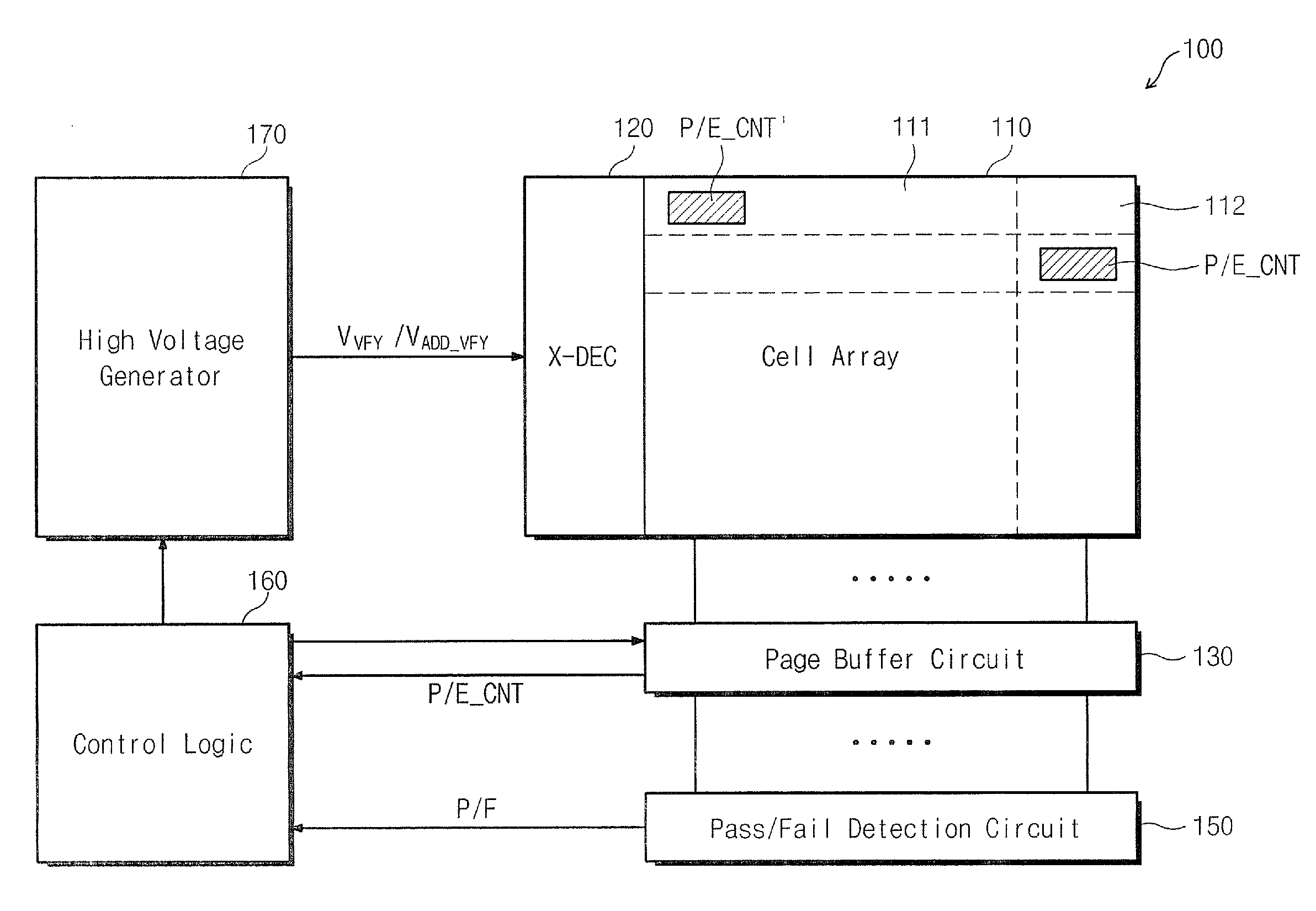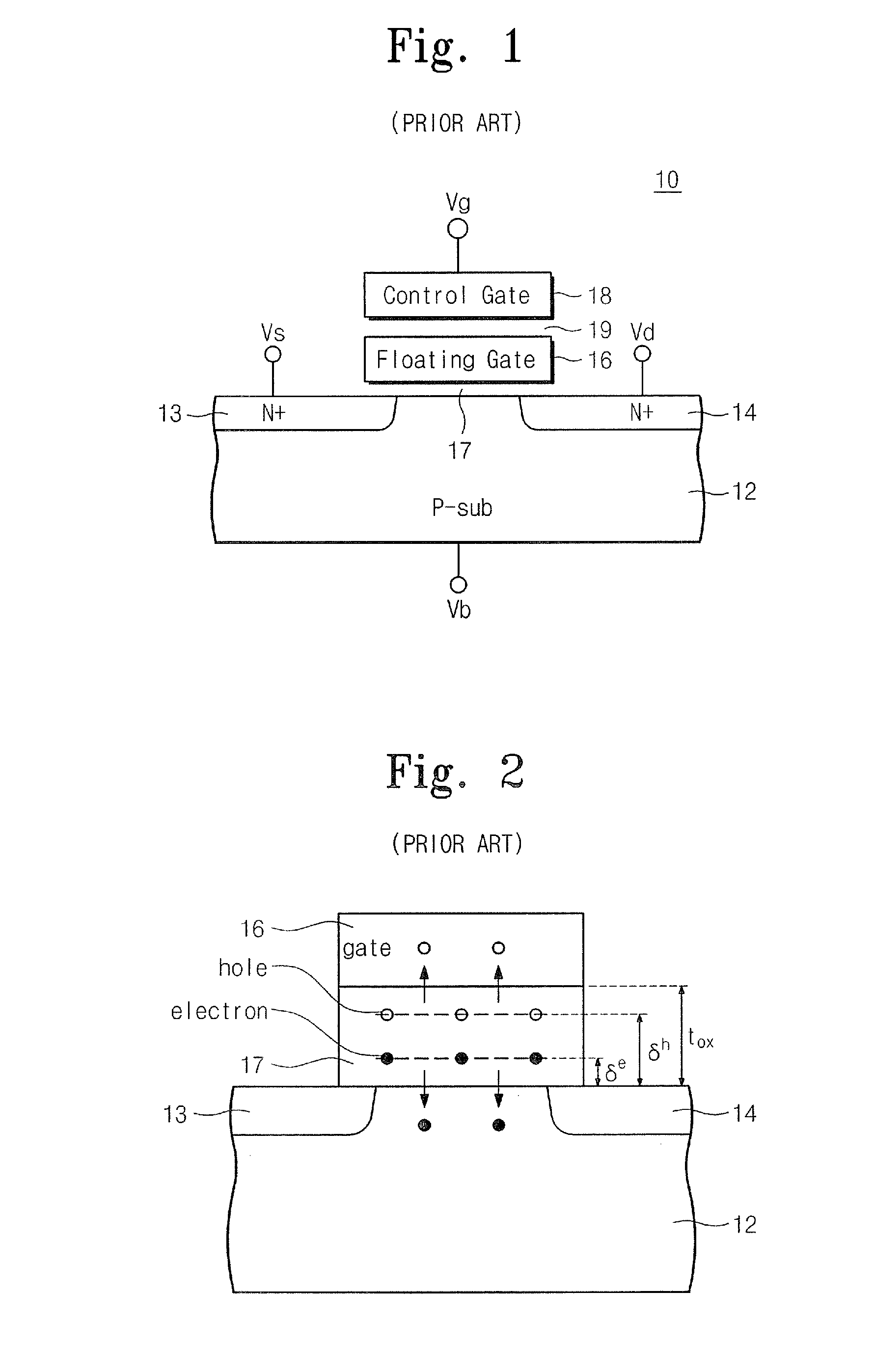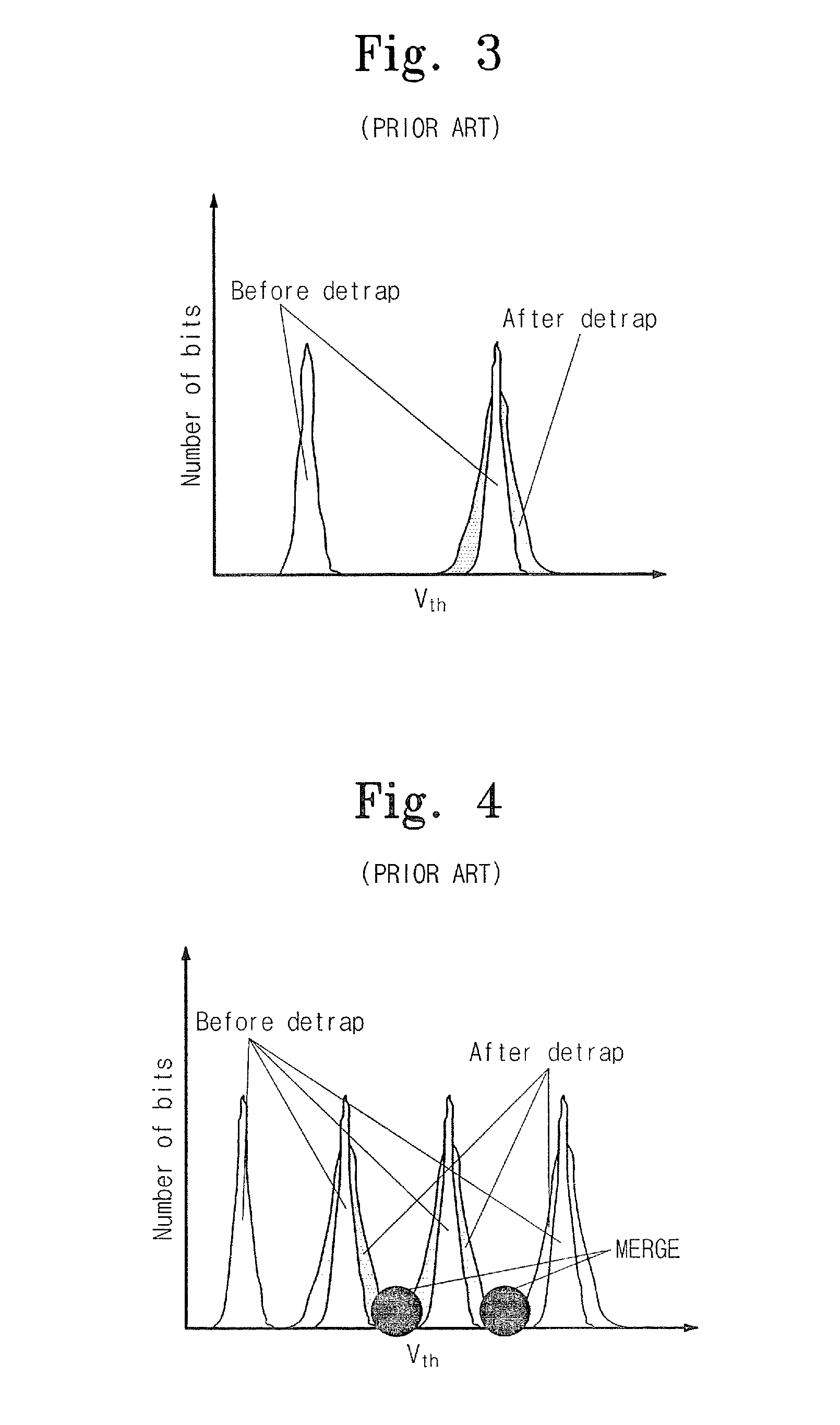Flash memory devices that utilize age-based verify voltages to increase data reliability and methods of operating same
a flash memory and verify voltage technology, applied in the field of nonvolatile memory devices, can solve the problems of affecting the accuracy of data states or the disadvantages of flash memories to high-density integration, and achieve the effect of improving the reliability of flash memory cells, reducing the accuracy of data states or data reliability, and reducing the accuracy of data sta
- Summary
- Abstract
- Description
- Claims
- Application Information
AI Technical Summary
Benefits of technology
Problems solved by technology
Method used
Image
Examples
Embodiment Construction
[0023]Preferred embodiments of the present invention will be described below in more detail with reference to the accompanying drawings. The present invention may, however, be embodied in different forms and should not be constructed as limited to the embodiments set forth herein. Rather, these embodiments are provided so that this disclosure will be thorough and complete, and will fully convey the scope of the present invention to those skilled in the art. Like reference numerals refer to like elements throughout the accompanying figures.
[0024]FIG. 5 is a block diagram of a flash memory device 100 according to an embodiment of the present invention, illustrating a functional structure of a NAND-type flash memory device. Embodiments of the invention may also include NOR-type flash memory devices, for example. Referring to FIG. 5, the flash memory device 100 is illustrated as including a memory cell array 110, an X-decoder 120, a page buffer circuit 130, a pass / fail detection circuit...
PUM
 Login to View More
Login to View More Abstract
Description
Claims
Application Information
 Login to View More
Login to View More - R&D
- Intellectual Property
- Life Sciences
- Materials
- Tech Scout
- Unparalleled Data Quality
- Higher Quality Content
- 60% Fewer Hallucinations
Browse by: Latest US Patents, China's latest patents, Technical Efficacy Thesaurus, Application Domain, Technology Topic, Popular Technical Reports.
© 2025 PatSnap. All rights reserved.Legal|Privacy policy|Modern Slavery Act Transparency Statement|Sitemap|About US| Contact US: help@patsnap.com



